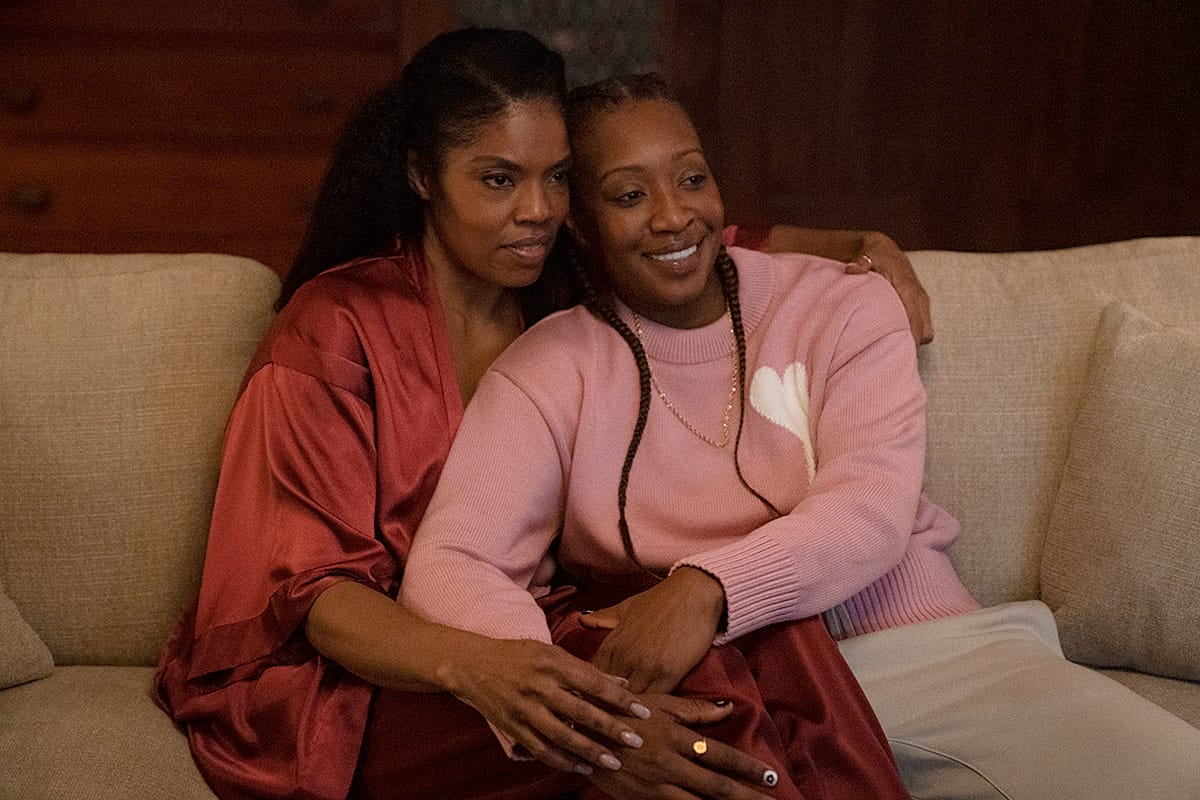Join GLAAD and take action for acceptance.
Trending
- Facts and Action for Banned Books Week
- Write It Out! Launches Annual Campaign to Uplift People Living with HIV Through Playwriting
- GLAAD Gaming Announces New Queer Emerging Developers Program
- We All Could Use Some Queer Joy! Be a Part of The Skin Deep + GLAAD’s New Collab
- Finding Yourself Begins With Celebrating Others’ Differences
- Must-See LGBTQ TV: October Premieres and Returns!
- Fact Sheet: Landmark Supreme Court Case Regarding Protections Against So-Called Conversion “Therapy” for Youth
- Lessons Learned: On Organizing for Inclusive and Welcoming School Systems
Where We Are on TV 2023-2024

The lack of growth in Black LGBTQ representation on screen in the past few years has been a constant concern for the community. GLAAD’s Communities of Color and Media team has launched multiple initiatives to increase Black queer storytellers in Hollywood: The inaugural Black Queer Creative Summit (BQCS), an in-person event, specifically geared towards educating, empowering, and training emerging Black LGBTQ creatives across five sectors of the entertainment industry: executives, creators, behind the scenes, on-screen talent, and music supervision. The Summit spotlights, celebrates, and curates professional growth opportunities for Black LGBTQ creative leaders, fostering a pathway for the next generation of Black LGBTQ artists through event keynotes, fireside chats, workshops, and mentorship opportunities.
The Equity in Media and Entertainment Initiative (EMEI), which is a year-long program designed specifically for Black LGBTQ creatives to elevate Black queer storytelling in entertainment and media. EMEI serves as a pathway to build and strengthen professional networks, advance access to executive leaders and spaces, and support early development of original creative projects. The alumni of these programs are a valuable resource that the industry should call on in order to create meaningful representation for a vital part of the community.
Of the 64 LGBTQ characters counted on primetime scripted broadcast programming, 16 (25 percent) are Black. This is an increase from last year’s 21 percent, but still below the previous year’s 29 percent. Some highlights of Black LGBTQ representation on broadcast include lesbian characters Coop and Patience on The CW’s All American, one of the few original CW shows that hasn’t been canceled, Hen and Karen on ABC’s 9-1-1, as well as Black LGBTQ characters on procedurals such as FBI: Most Wanted, The Irrational, Fire Country, and more.
There was also an increase of Black LGBTQ characters on primetime scripted cable. Of the 77 LGBTQ characters counted, 23 (30 percent) are Black. This is an increase from the 24 percent counted last year. Cable has counted several shows with predominantly Black casts that include LGBTQ characters in their ensemble, including Starz’s Power franchise, with Black queer characters in both Raising Kanan and Ghost. BET also continues to include gay and bi+ men on Tyler Perry’s Sistas and The Oval. Showtime’s The Chi continues to grow the LGBTQ characters in its ensemble, and features the only trans woman on cable, Fatima.
Streaming was the only platform where Black LGBTQ representation decreased year over year. Of the 327 LGBTQ characters on scripted streaming originals, 56 (17 percent) are Black, a slight decrease of one percentage point from last year’s 18 percent. Highlights include lead characters Marie and Andre on Amazon’s Gen V, the new Doctor and companion Rose on Doctor Who, the lead Joe and his husband in Hulu’s Culprits, trans character Elle on Netflix’s Heartstopper, Eric and Cal on the final season of Netflix’s Sex Education, Tristan and Lexi on Paramount+’s SkyMed, and more.
Across all three platforms, Black representation remained steady with 95 Black LGBTQ characters of 468 LGBTQ characters (20 percent). This is the same percentage as the previous year.
Representation of Black LGBTQ Characters
No Data Found
Table of Contents
Share this
View Past Years’ Reports
MEASURE THE MOVEMENT
Your gift allows us to track the impact of our work, helping us better understand the state of acceptance and address the gaps with advocacy — like pushing for more trans representation in movies.
More Publications from GLAAD
The GLAAD Studio Responsibility Index (SRI) maps the quantity, quality and diversity of lesbian, gay, bisexual, transgender, and queer (LGBTQ) characters in films released by seven major motion picture studios during the 2021 calendar year. GLAAD researched films release by Lionsgate, Paramount Pictures, Sony Pictures, United Artists Releasing, Universal Pictures, Walt Disney Studios and Warner
This report brings an academic and personal voice of the impact that the COVID-19 pandemic has had to-date on the fight to end the HIV epidemic, while also providing recommendations/ needs from people at community based organizations (CBOs) who serve and support the community. We underscore the disruption in access to HIV prevention and care services due to mitigation measures imposed in the early days of the COVID-19 pandemic, which will have implications for many years to come. We also highlight innovation to HIV service delivery that provided an important bridge between healthcare professionals and clients in an unprecedented time. Our recommendations will help sustain the fight against HIV in the United States in the midst of this pandemic, and future health emergencies.
Una guía de 11 páginas para ayudar a los escritores, productoras y líderes de cadenas y estudios a encontrar el camino para crear historias que sean divertidas o dramáticas, complejas y convincentes, totalmente atrapantes e inclusivas
An 11-page guide available in both English and Spanish to help writers, producers and network and studio leaders find a way forward toward creating stories that are funny or dramatic, complex and compelling, totally binge-worthy and also LGBTQ inclusive.












